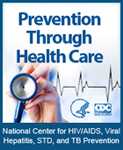National Black HIV/AIDS Awareness Day 2013
High-resolution, downloadable video and graphics
These images are in the public domain and are thus free of any copyright restrictions. As a matter of courtesy, we request that the content provider be credited and notified of any public or private usage of an image.
Graphics Highlighting Most Current New HIV Infection Data Among African Americans
 Estimated Rate of New Infections, 2010
Estimated Rate of New Infections, 2010
View High Resolution Version
CDC’s new estimates show that African Americans, more than any other racial/ethnic group, continue to bear the greatest burden of HIV in the United States. The overall HIV infection rate among blacks was almost eight times higher than that of whites (68.9 v. 8.7 per 100,000 of the population).
Hispanics also continue to be disproportionately affected by HIV. The HIV infection rate among Hispanics was three times that of whites. (27.5 v. 8.7 per 100,000).
Whites accounted for nearly a third (31 percent) of all new HIV infections in 2010 (14,900), but had a substantially lower HIV infection rate (8.7 per 100,000) than African Americans or Hispanics.
 Estimated New HIV Infections among Black Women, 2008-2010
Estimated New HIV Infections among Black Women, 2008-2010
View High Resolution Version
Black women accounted for 13 percent of all new HIV infections in the United States in 2010 and nearly two-thirds (64 percent) of all new infections among women. Most black women (87 percent) were infected through heterosexual sex. While new infections among black women remain high, for the first time this analysis found indications of an encouraging decline. Between 2008 and 2010, new HIV infections among black women decreased 21 percent, from 7,700 in 2008 to 6,100 in 2010. Additional years of data will be needed to determine if the decrease among black women is the beginning of a longer-term trend.
- Page last reviewed: February 5, 2013
- Page last updated: December 27, 2013
- Content source:


 ShareCompartir
ShareCompartir

